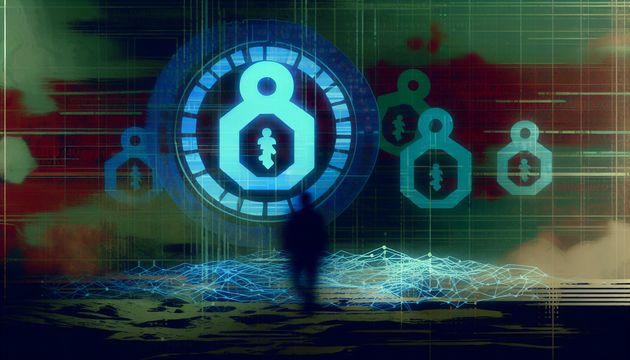
Understanding and Mitigating the SonicWall SMA Vulnerability
SonicWall Secure Mobile Access (SMA) devices have become a focal point in cybersecurity discussions due to a vulnerability that has been actively exploited since early 2025. This vulnerability, identified as CVE-2021-20035, was initially disclosed in 2021 with a medium risk level, primarily associated with denial-of-service attacks. However, recent developments have escalated its severity, now including potential remote code execution, as reported by Help Net Security. The vulnerability’s evolution underscores the dynamic nature of cybersecurity threats and the importance of timely updates and patches. Cybersecurity firm Arctic Wolf has highlighted active exploitation campaigns targeting these devices, emphasizing the need for robust security measures (BleepingComputer).
Understanding the SonicWall SMA Vulnerabilities
Historical Context and Initial Disclosure
The security vulnerability affecting SonicWall Secure Mobile Access (SMA) appliances, identified as CVE-2021-20035, was first disclosed in September 2021. At the time of its initial disclosure, the vulnerability was primarily associated with denial-of-service (DoS) attacks. It was rated with a CVSS score of 6.5, indicating a medium risk level. SonicWall provided patches for the affected devices, which included the SMA 200, 210, 400, 410, and the virtual SMA 500v deployed on various platforms such as ESX, KVM, AWS, and Azure (BleepingComputer).
Evolution of the Vulnerability
The vulnerability has evolved significantly since its initial disclosure. In April 2025, SonicWall updated the security advisory to reflect a more severe impact, including the potential for remote code execution. This update was prompted by evidence of active exploitation in the wild, as reported by cybersecurity firm Arctic Wolf. The CVSS score was subsequently upgraded to 7.2, indicating a high severity level (Help Net Security).
Technical Details of the Exploit
Imagine a locked door that can be opened with a simple trick rather than a key. The vulnerability stems from improper neutralization of special elements in the SMA 100 management interface. This flaw allows remote authenticated attackers to inject arbitrary commands as a ‘nobody’ user, potentially leading to code execution. The attack requires low privileges and is characterized by low complexity, making it an attractive target for threat actors (Cybersecurity Dive).
Active Exploitation and Campaigns
Since January 2025, there have been reports of active exploitation campaigns targeting SonicWall SMA appliances. Arctic Wolf identified a campaign that began as early as January 2025, extending into April 2025. This campaign involved the use of a local super admin account with a default password, highlighting the importance of securing default credentials. The attackers targeted SMA 100 series appliances with exposed management interfaces, leveraging the vulnerability to gain unauthorized access (BleepingComputer).
Mitigation Strategies and Recommendations
To mitigate the risk posed by CVE-2021-20035, network defenders are advised to implement several security measures:
- Limit VPN access to essential accounts.
- Deactivate unnecessary accounts.
- Enable multi-factor authentication for all accounts.
- Reset passwords for all local accounts on SonicWall SMA firewalls.
SonicWall has also urged customers to apply the latest patches to their devices to address this and other vulnerabilities (Undercode News).
Regulatory and Organizational Responses
The Cybersecurity and Infrastructure Security Agency (CISA) has responded to the active exploitation by adding CVE-2021-20035 to its Known Exploited Vulnerabilities catalog. CISA has mandated that Federal Civilian Executive Branch (FCEB) agencies secure their networks against ongoing attacks by May 7, 2025. This directive underscores the critical nature of the vulnerability and the need for immediate action to protect sensitive systems (Capa Learning).
Impact on Small and Medium Businesses
SonicWall SMA 100 series appliances are widely used by small and medium businesses (SMBs) as unified secure access gateways. The exploitation of CVE-2021-20035 poses a significant threat to these organizations, as successful attacks can lead to unauthorized access and potential data breaches. The vulnerability’s exploitation highlights the importance of maintaining up-to-date security measures and the potential consequences of neglecting cybersecurity best practices (Help Net Security).
Future Implications and Security Posture
The ongoing exploitation of the SonicWall SMA vulnerability serves as a reminder of the evolving threat landscape and the need for continuous vigilance. Organizations must prioritize cybersecurity by regularly updating software, conducting security audits, and educating employees about potential threats. As threat actors continue to exploit known vulnerabilities, maintaining a proactive security posture is essential to safeguarding sensitive information and ensuring operational continuity (Heise Online).
By understanding the historical context, technical details, and mitigation strategies associated with CVE-2021-20035, organizations can better prepare for and respond to similar threats in the future. The SonicWall SMA vulnerability underscores the importance of timely patching and the need for a comprehensive approach to cybersecurity.
Final Thoughts
The ongoing exploitation of the SonicWall SMA vulnerability serves as a stark reminder of the ever-evolving threat landscape in cybersecurity. Organizations, particularly small and medium businesses, must prioritize cybersecurity by implementing comprehensive security measures and staying informed about potential threats. The active campaigns exploiting CVE-2021-20035 highlight the critical need for vigilance and proactive defense strategies. As noted by Heise Online, maintaining a proactive security posture is essential to safeguarding sensitive information and ensuring operational continuity. By understanding the historical context, technical details, and mitigation strategies associated with this vulnerability, organizations can better prepare for and respond to similar threats in the future.
References
- BleepingComputer. (2025). SonicWall SMA VPN devices targeted in attacks since January. https://www.bleepingcomputer.com/news/security/sonicwall-sma-vpn-devices-targeted-in-attacks-since-january/
- Help Net Security. (2025). SonicWall SMA100 vulnerability exploited by attackers (CVE-2021-20035). https://www.helpnetsecurity.com/2025/04/18/sonicwall-sma100-vulnerability-exploited-by-attackers-cve-2021-20035/
- Cybersecurity Dive. (2025). SonicWall SMA100 vulnerability exploited. https://gcp.cybersecuritydive.com/news/sonicwall-sma100-vulnerability-exploited/745637/
- Undercode News. (2025). CISA flags actively exploited SonicWall SMA vulnerability, critical patch guidance issued. https://undercodenews.com/cisa-flags-actively-exploited-sonicwall-sma-vulnerability-critical-patch-guidance-issued/
- Capa Learning. (2025). CISA flags actively exploited vulnerability in SonicWall SMA devices. https://capalearning.com/2025/04/17/cisa-flags-actively-exploited-vulnerability-in-sonicwall-sma-devices/
- Heise Online. (2025). Sonicwall SMA100: Attackers abuse old vulnerability. https://www.heise.de/en/news/Sonicwall-SMA100-Attackers-abuse-old-vulnerability-10355687.html



